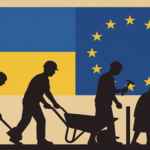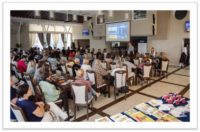
The term “think global, act local” was first used in a development context by the environmental movement in the 1960s and 70s. It referred to the need to be aware about world-wide environmental issues such as global warming, and then to take action to address these issues by making lifestyle changes in your household and community.
I suppose it originally meant that if you wanted to achieve change and improvement, you could not wait for global legislation or global action. The best course of action was to drive the changes of yourself. You could act to reduce your own environmental impact e.g. by consuming less energy or water. ‘Acting locally’ starts to address what you see as a global issue.
In my opinion, it is time to re-examine what “think global, act local” means for today’s increasingly connected and dependent world. ‘Think global, act local’ has taken on much wider meaning and use in recent years. It is known that most companies and supply chains need to serve a worldwide customer base. Companies, especially those trying to run lean supply chains, want to keep their operations as simple and standardised as possible – that way they can drive efficiencies and economies of scale. But that misses a key principle of lean look at value from the customer’s perspective. If you don’t, you run the risk of having no customer, no brand and no market. Customers have local and specific tastes and preferences. The supply chain needs to act locally to understand and meet those needs.
Moreover, supply chains run on information, but more importantly they run on people. People, in essence, the greatest asset because they are the greatest repository of knowledge and insight.
Product presentations need to differ between markets. In Europe, most pharmaceutical tablets, for instance, are sold in blister packs that can be dispensed quickly and securely to patients. In the US, tablets still tend to be sold in large count bottles that pharmacies have to dispense to customers. US pharmacies tend to be located at the back of drugstores or supermarkets: during the time the tablets are being counted and dispensed, the patient will have longer time to spend in the rest of the store shopping. In some less developed economies, blister packs may still be used, but counted in smaller quantities. If not, the pharmacist may simply cut up the blister strip to a size that the patient can afford to purchase.
In all cases it is vital to understand customer needs. This information needs to be shared along the supply chain, passing local intelligence back into the global chain so that supply needs can be tailored to meet customer demand. The knowledge input can go into product design or into the real-time supply chain, according to fashion or seasonal demand. The supply chain has to respond quickly and effectively if it is going to succeed and compete against other supply chains. In the information-enabled world, this knowledge can be shared rapidly, but human insight remains vital. Direct feedback from people on the ground remains the most valuable source.
So, in my opinion, this motto is still actual for any business person as well as any multimedia specialist.


























































Залишити відповідь